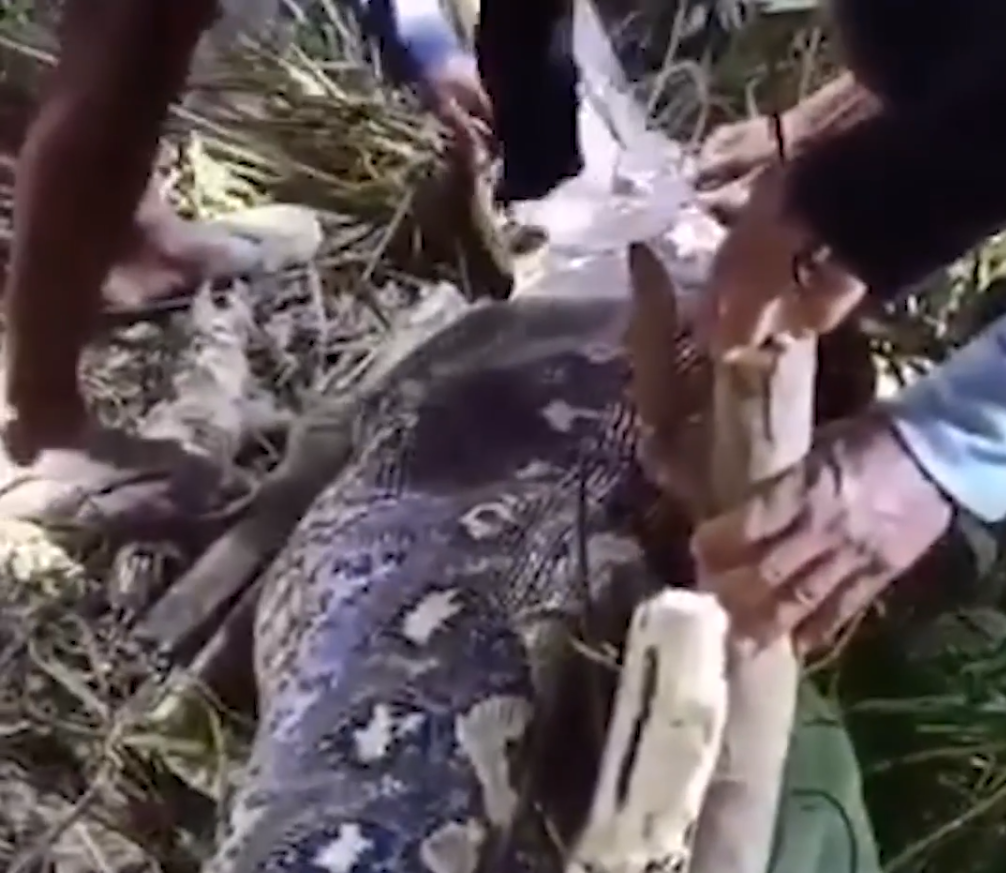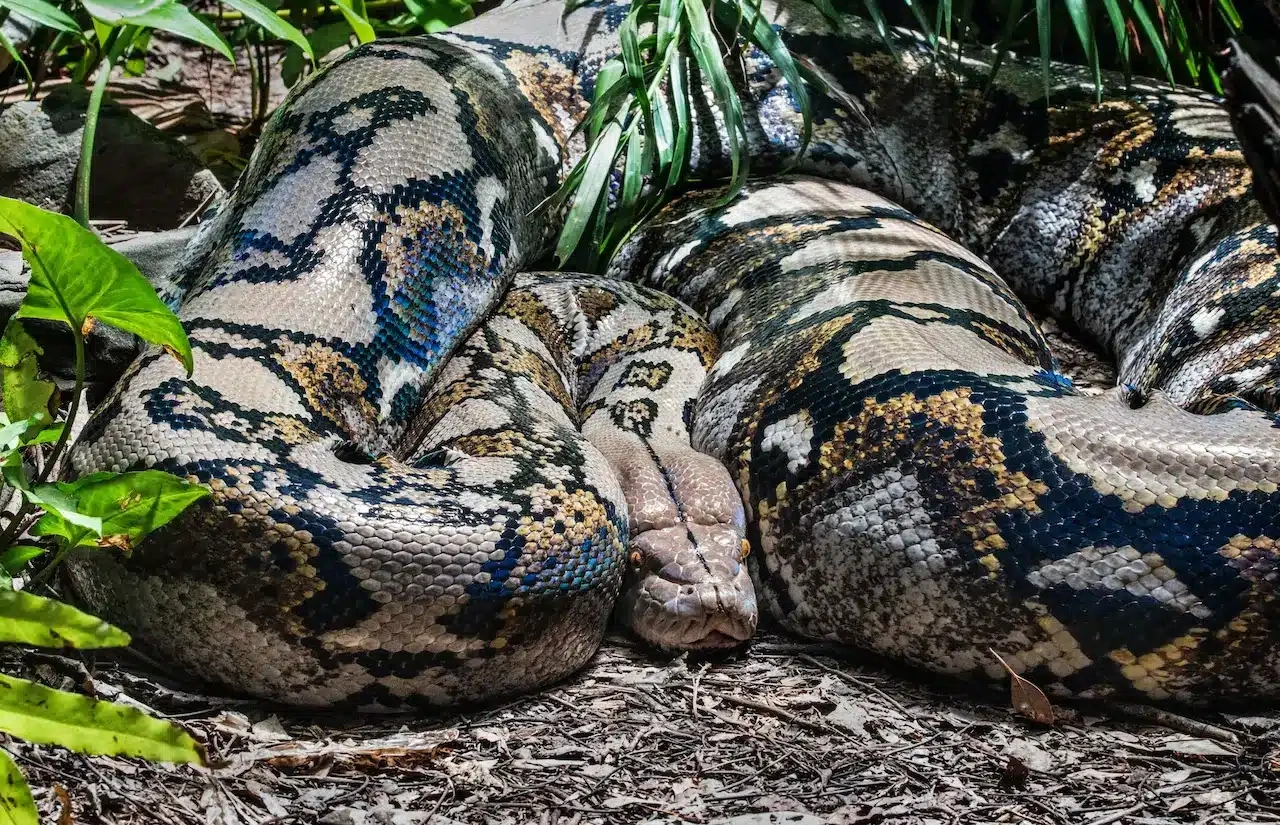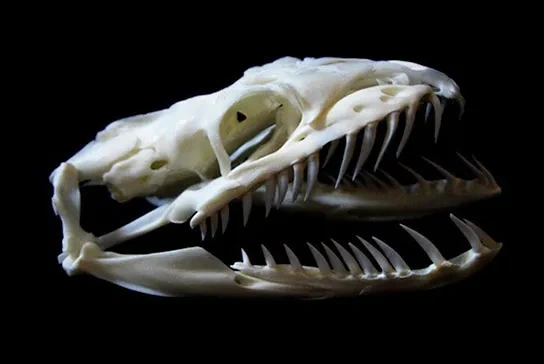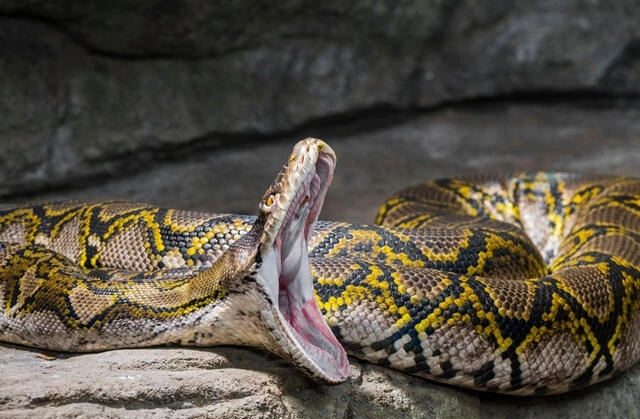If you have ever watched "Anaconda", a Hollywood movie series about giant South American pythons, you will have witnessed images of huge pythons wrapping around and swallowing their unfortunate victims.
So does a python eating a human really happen in real life, or are these just fictional details imagined by the movie director?
In fact, many cases of pythons eating humans have been recorded, but the culprits are usually the reticulated python (also known as the reticulated python) and the African rock python. Of these, the reticulated python is the species that is recorded to cause the most attacks and cannibalism.
Consecutive cases of reticulated pythons eating people in Indonesia
In early April alone, two cases of pythons eating humans were recorded in Indonesia, causing a stir in public opinion.
The first case occurred on April 1, when a 66-year-old woman named Hasia was walking home after a day of work at a rubber plantation in Pitu Riase district, South Sulawesi province. However, by nightfall, her family still did not see her return home, so they mobilized people to join the search.
Villagers searched the road from the rubber plantation back home. At 9 pm, they discovered a large python, about 7m long with an abnormally swollen belly, lying quietly in the bushes.
A python with a bulging belly was killed by people (Photo cut from clip).
People joined forces to kill the large python, then cut open its belly and were horrified to discover Mrs. Hasia's body lying inside the python's belly.
"At first we were worried that she might have fallen or gotten lost, but when we found the python with its bloated belly, I was terrified. It was so cruel. It must have been a painful death for my mother," Nurdin, Hasia's son, said in pain.
After the incident, local authorities called on people to be more careful when going through the forests and bushes around the village because this is home to many large pythons.
"We urge people to be more careful when passing through the plantation and forest areas, as these areas are known to be inhabited by large pythons. They are aggressive and can attack humans to eat them," said Ipda Zakaria, Pitu Riase District Police Chief.
The second case of a man-eating python occurred in a village near the forest in Buton district (Southwest Sulawesi province) when Ms. Wa Siti, 55 years old, was working on her family's plantation when she was suddenly attacked by a large python in the bushes.
When it was dark but his mother had not returned home, La Faru, Wa Siti's son, went searching everywhere. When he reached a bush near the family's plantation, La Faru was horrified to see his mother being eaten by a large python, with its head completely inside the animal's mouth.
La Faru called the surrounding neighbors for help. The villagers used weapons to kill the python, but it was too late to save Mrs. Wa Siti's life.
"People saw the python wrapped around Wa Siti's body and swallowing her head. They immediately killed the python but it was too late," said One Hardi, Buton district police officer.
Locals said they had seen large pythons in the forest near the village, but they never thought that these animals could eat people.
Reticulated pythons in the forests of Indonesia can grow to extremely large sizes thanks to abundant food sources and suitable habitats (Photo: SNL).
Indonesia has a large population of reticulated pythons that live in forests and in areas near human habitation. The abundant food resources in the forests have allowed reticulated pythons in Indonesia to grow to exceptionally large sizes.
Human encroachment on forests for villages and agriculture in Indonesia has led to more frequent clashes between humans and reticulated pythons.
A few days ago, a man living on the island of Bali also died after a python wrapped itself tightly around his neck while he was trying to catch the animal with his bare hands.
In 2024, at least four cases of reticulated python attacks and man-eating were recorded in Indonesia.
Large pythons are widely distributed throughout Southeast Asia.
The reticulated python, also known as the Asian reticulated python ( scientific name Python reticulatus), is a python found in many different habitats, ranging from dense forests, swamps, canals to even large cities, causing them to frequently clash with humans.
The reticulated python's lower jaw can split in two, allowing this animal to swallow large prey (Photo: CTM).
This is the longest reptile in the world today, with an adult length of more than 6m, sometimes up to 8m or 9m, but quite rare. An adult reticulated python weighs from 150 to 270kg.
Reticulated pythons are widely distributed throughout Southeast Asia and India. Their diet includes birds and animals such as rodents, pigs, deer, primates, etc. They can also eat dogs, cats, and chickens in residential areas.
In Vietnam, the reticulated python is an animal listed in the Red Book and is protected by law, prohibiting all forms of hunting and trading...
How do reticulated pythons hunt?
Like other pythons, reticulated pythons are non-venomous and hunt by wrapping their bodies around their prey and squeezing them to death. Although non-venomous, reticulated python bites cause profuse bleeding and can cause serious infections because their mouths contain many dangerous bacteria.
According to Dr. Harry Greene from Cornell University, USA, with the strength of an adult reticulated python, it can easily kill an adult in just a few minutes.
Dr. Greene said the way pythons attack humans is similar to when they hunt prey. First, the python will bite to hold the victim. Reticulated pythons are not venomous, but have sharp, inward-curving teeth that help them hold on to their prey after biting.
Reticulated pythons have sharp teeth and muscular strength that help them easily kill large prey (Photo: Shutterstock).
After biting and holding its prey, the reticulated python will coil its body around its victim, making it unable to breathe. If a human is strangled by a reticulated python, their ribs and internal organs will soon be destroyed and the victim will stop breathing within minutes.
Dr. Greene said that while reticulated pythons kill humans very quickly, it would take them a long time to swallow an adult human, which is a large prey item.
"Pythons can swallow large prey because their lower jaw is detachable, not attached to the skull, allowing the python to open its mouth wide to swallow its prey. It can take up to an hour for a reticulated python to swallow an adult human," Dr. Greene added.
Besides the cases of humans being attacked and eaten by wild reticulated pythons, there have been some cases of pet reticulated pythons attacking and killing their owners when they were agitated.
Terrifying moment a reticulated python suddenly attacks its owner while being fed (Video: Uno Sandvick).
For example, in January 2008, a 25-year-old woman living in Virginia, USA, was attacked and strangled to death by her own pet reticulated python. The python did not eat her, but the animal was found in an agitated state.
In January 2009, a reticulated python kept in Las Vegas attacked and nearly killed a 3-year-old child. When the mother discovered the incident, she used a knife to attack the python to rescue her child. The child luckily survived, but the python was killed.
Source: https://dantri.com.vn/khoa-hoc/lien-tiep-nhung-vu-tran-an-thit-nguoi-gay-rung-dong-du-luan-20250426025316353.htm








![[Photo] Prime Minister Pham Minh Chinh chairs a meeting of the Government Standing Committee on overcoming the consequences of natural disasters after storm No. 11](https://vphoto.vietnam.vn/thumb/1200x675/vietnam/resource/IMAGE/2025/10/09/1759997894015_dsc-0591-jpg.webp)


![[Photo] Prime Minister Pham Minh Chinh chairs the Conference to deploy the National Target Program on Drug Prevention and Control until 2030](https://vphoto.vietnam.vn/thumb/1200x675/vietnam/resource/IMAGE/2025/10/09/1759990393779_dsc-0495-jpg.webp)























































































Comment (0)